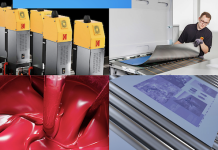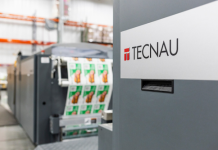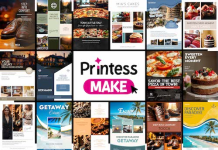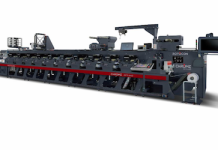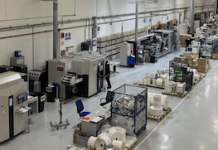Bytes Document Solutions shares insight into why short-run packaging is a huge opportunity for commercial printers.
For many people, the mention of packaging print brings up visions of specialised carton presses and flexo printing. Traditionally, packaging print has been a viewed as a long-run process, best suited to specialised manufacturers.
However, although there is still a place for this style of manufacture, the packaging world is changing.
The long tail model/theory was made popular by Chris Anderson who has written two books on the subject. In most sales situations, people follow the Pareto model. This argues that 80% of business comes from 20% of your customers. However, Anderson argues that, in many situations, this weighting is changing. The future of many businesses is of selling less of more.
For instance, Amazon bases their business model on selling virtually anything that is available. If you want some incredibly obscure book, Amazon will offer it to you. They make more money from selling this choice rather than focusing on the most popular items, as traditional retailers do.
As more companies follow this line of thinking, companies are increasing their range of offerings. Special editions, re-releases and products aimed at a more niche audience are now commonplace. This is great news for the printing industry.
There is now a massive number of small volume packaging opportunities. This sort of packaging is not suited to the traditional packaging manufacturers. It is better handled by commercial companies. Digital presses can keep runs low. They allow their customers to be incredibly flexible in the products that they offer.
Here are some of the opportunities that are available for printing companies to offer their customers:
• Helping new businesses launch when they are not sure of volumes.
• Launching trial products.
• Trying new types of packaging.
• Launching promotional products.
• Producing regional variations.
• Creating collector’s editions.
• Producing just-in-time packaging for e-commerce companies.
Let’s see how this trend affects the chocolate industry. Traditionally we bought chocolate from a few big manufacturers. They had a few standard offerings that always had the same packaging.
Recently, there has been an explosion in artisan chocolatiers. Most of these businesses are small. But most also offer an extensive range of products. They need a wide range of small run packaging for their products. The price of their chocolate is also much higher than mass-produced standard chocolate. The packaging needs to be of a quality that reflects the luxury positioning of their brands.
There is a massive opportunity for commercial printers here. Most chocolatiers do not know anything about packaging. They are willing to be guided. They probably also need design services, flyers and possibly signage. This is just one small segment of business. There are many other businesses that work on the same model. How do you make the most of this opportunity?
Here are three action points to start your packaging journey:
• Firstly, make sure that you are aware of what you are capable of producing. Your press might be more capable of producing packaging than you realise.
• Next, talk to your current customers. Do they have packaging requirements that you were not aware of? Could you increase your business with these customers by offering packaging?
• Finally, think about what businesses you could focus on that could benefit from packaging offerings. Create a campaign to reach out to them.



